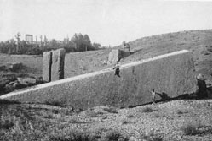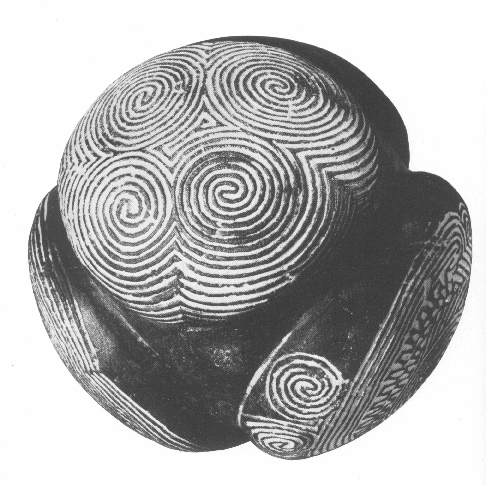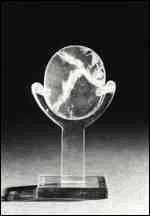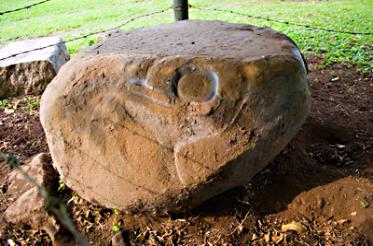According to the
British Science Council (1) The definition of science in
1999 was:
"The
pursuit of knowledge and understanding of the natural and
social world following a systematic methodology based on
evidence".
While according to
Webster's New Collegiate Dictionary,
Science is more broadly defined as:
"knowledge
attained through study or practice,"
Perhaps the easiest
definition for science can be found through the word itself, which
comes from the Latin 'scientia', meaning knowledge: The
search for knowledge... While most
archaeological discoveries are presented as objects of functional or ornamental
use, each one also represents a set of traditions and knowledge
arrived at following generations of experimentation.
|
|
|
When his writings on hydraulics, pneumatics and
mechanics were translated into Latin in the sixteenth century,
Hero�s readers were amazed to discover descriptions of inventions which
included vending machines, a water-pump, a wind-organ, and the aeolipile
(the first recorded steam engine).
|
 The Top-50 Stones.
The Top-50 Stones.
A look at
the largest megaliths from around the ancient world.
 The Stone
Balls.
The Stone
Balls.
What was the purpose of the hundreds of
geometrically carved petrospheres found in Scotland and Costa Rica.
 Crystal Power.
Crystal Power.
The
human
fascination with crystals can be traced back to
before the Palaeolithic, but why.?
 Prehistoric Flight.
Prehistoric Flight.
The aerodynamic
qualities of the Egyptian and
South American 'planes' suggests
experimentation.
 Magnetism.
Magnetism.
The naturally
magnetic properties of stone were recognised by
pre-Columbian Americans... but How?.
|
|
Research
has shown that the
acoustic properties of caves were recognised at least as
far back as the Palaeolithic times. It has also been
determined that many
prehistoric constructions were designed to incorporate acoustic phenomena,
This section examines the evidence in an effort to
understand exactly what the purpose of such features
was.
|
Evidence
suggests that surgical processes were being performed as
early as 50,000 years ago. Although obvious medical
procedures such as dentistry and trepanation are
commonly seen in skeletal remains, it is likely that
they represent the tip of the prehistoric medical
iceberg.
|
It is
suggested that astronomy played an important part in our
intellectual development. The importance of the motions
of the heavens is reflected in the number of
astronomically orientated structures and artefacts all
around the ancient world.
|
Unlike
other species which are gifted with magnetic homing
instincts, the complications of human social behaviour
have led to us rely on cartography to navigate from one
place to another. Cartography represents the evolution
of spatial skills and their transfer into maps which was based on
geometric and mathematical skills.
|
The
builders of the megaliths, pyramids and other
prehistoric structures left behind several good visual
clues to their construction techniques, but when we find building blocks
of a thousand tons and fitted
together with paper-thin gaps, we are left wondering how such
achievements could have been accomplished.
|
The art
of metallurgy can now be traced back over several
thousand years with the earliest foundries at
Catal H�y�k,
Turkey. Not content with simply melting metals, we found
ways of mixing them, producing harder and more durable
metals, as well as learning to work with the softer ones
such as gold.
|
One of
the most controversial sciences from prehistoric times,
the geodetic placement of ancient and sacred structures
along prescribed longitudes and latitudes is one of the
strongest pieces of evidence that prehistoric man was
aware both of the earth's dimensions, and how to measure
them accurately.
|
Myths and fables of everlasting
flames, and dynamic drawings from Egypt are unknown
quantities, but what of the
Baghdad Batteries,
discovered in the Iraqi desert?. They certainly suggest that
someone was experimenting with something, there is no
better explanation.
|
The
discovery of over 400 ancient lenses has lent weight to
the possibility that some at least, might have been used
for astronomical purposes. Perhaps no coincidence that
contemporary Babylonian texts refer specifically and
accurately to celestial objects and details that are not
available with the naked eye.
|
As well as working with the largest
and hardest stones, the design and skill levels
employed in prehistoric constructions reveals an understanding and high working
knowledge of universal geometric constants, acoustics,
engineering and the properties of stone itself.
|